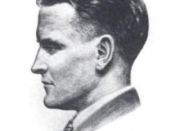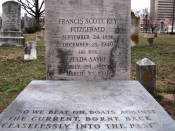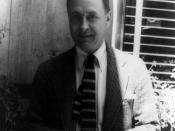Often the setting, time, and other minute descriptions in a book help to get a message across to the reader. The initial importance of these kinds of things may be minimal, however, after thinking about what they really mean, a deeper, more descriptive story is portrayed. Symbols developed throughout a book, even simple ones such as a certain color, help to bring out an underlying meaning, which may at first have no significant importance in the story. In The Great Gatsby by F. Scott Fitzgerald, published in 1995, the narrator tells a story full of description and symbolism. The message in Fitzgerald's The Great Gatsby is enhanced through his use of time, setting, and colors.
The period in history in which the story takes place is referred to throughout the book. In the 1920's, life was very rambunctious and included wild parties, which demonstrates that people liked to have fun.
Fitzgerald uses vivid descriptions to depict the 1920's lifestyle. The narrator describes a party that he can see:
There was dancing now on the canvas in the garden, old men pushing young girls backward in eternal graceless circles, superior couples holding each other tortuously, fashionably and keeping in the corners- and a great number of single girls dancing individualistically or relieving the orchestra for a moment of the burden of the banjo or the traps. By midnight the hilarity had increased. A celebrated tenor had sung in Italian and a notorious contralto had sung in jazz... (Fitzgerald 51).
This passage describes a hectic, crazy party that many people loved to attend in the 1920's. Fitzgerald describes the scene at the party while also informing the reader of the type of music they listened to in the 1920's. Harold Bloom also describes the parties of the twenties, "...the free party, the...


